The creator of the first direct flow
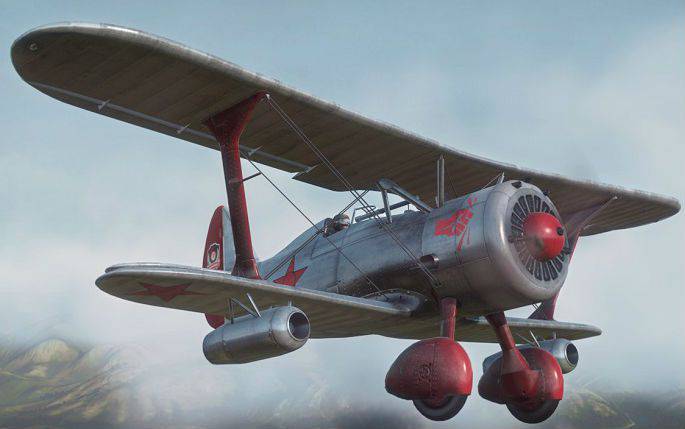
Igor Alekseevich Merkulov belongs to a remarkable galaxy of enthusiasts who, under the leadership of S.P. The Queen was the initiators of rocketry. Older people remember him from his speeches at the All-Union competitions "Cosmos", where he talked about the dreams of K.E. Tsiolkovsky and F.A. Zander, saturated with the romance of interplanetary flights, about the work of the GIRD team. Igor Alekseevich himself made a significant contribution to aviation and rocket and space technology: in particular, he was the designer of the world's first rocket with an air-jet engine (it also became the first Soviet two-stage rocket), and the world's first aviation ramjet engines.
Merkulov purposefully went to his goal for almost five years. After graduating from a technical school, working as a designer at TsAGI, he learns that a group for studying jet propulsion, the GIRD, has been created. Writes a letter to the CA Osoaviakhim: “I am interested in stellar navigation. Please accept the GIRD. Merkulov is accepted, and he becomes a student of special engineering and design courses. And soon Igor Alekseevich was appointed the head of the section of scientific and technical literature and on the instructions of the head of the GIRD - twenty-five SP Koroleva - Merkulov organizes the publication of collections "Jet Propulsion".
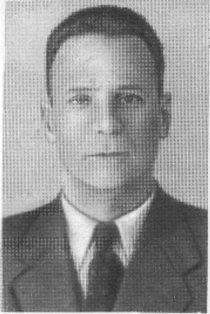
During the years of study at special courses, Merkulov comes to the conclusion that it is most interesting to do air-jet engines and get a job at an experimental GIRD factory in Pobedonostsev's brigade. Here he participates in the world's first experimental studies of models of direct-flow engines. Pobedonostsev placed them in the case of three-inch artillery shells, which were fired from a field gun.
When this work began to turn off, Merkulov resigned. Confident in the prospects that opened for aviation and rocket technology direct-flow jet engines (ramjet engines), Igor Alekseevich continues to work on them on a voluntary basis.
When GIRD from a public organization under Osoaviakhim becomes part of the Reactive Research Institute, a Missile group is organized under the Military Scientific Committee (in order not to lose the public asset of GIRD). Twenty-year-old Igor Merkulov is appointed its head. After the creation of the Stratosphere Committee, this group will be referred to as the Reactive Section. By organizing her work, he immediately establishes a correspondence with K.E. Tsiolkovsky, which lasted about one and a half years until the very last days of the scientist's life. As a memory of the founder of astronautics will remain twelve letters. It was in the third brigade of the Reactive Section, which was also headed by Merkulov, he took up theoretical studies of the ramjet engine.
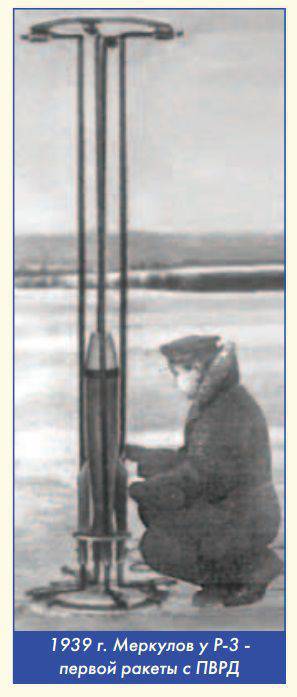
History He knows many examples when new theories in experimental testing turned out to be untenable. In those years, everyone feared that this could happen with the theory of ramjet engines. Scientific works have already appeared, in which it was argued that the maximum cross section of the combustion chamber, therefore, of the engine itself, should increase by a factor of forty or even ninety times compared with the input section of the engine. The result was not a compact engine, but almost a dirigible. In short, a dead end.
The merit of Merkulov was that the opinion of authorities did not embarrass him. He came to the conclusion that first the problem should be solved in principle. He owned the method of mathematical analysis before, the university’s mekhmat, at which he studied at the same time, gave more serious knowledge.
The work was laborious: three years of searching, incessant calculations. No matter how he thinks - traction is small. Increase it - catastrophically increase the size of the engine. Finally, the theoretical quest was crowned with success. Merkulov comes to the conclusion that if we assume the loss of an insignificant part of the efficiency of the thermodynamic cycle, we can win on the dimensions of the cross section of the chamber.
Since in those years, jet engines were treated as dangerous power plants, the designer decides that it is easier and safer to test him on a rocket. It flies without a person, so the risk is less. At first it was a project of a single-stage rocket with a combined engine, then a two-stage one with different types of engines - solid-fuel and direct-flow. Create such a rocket was easier. After troubles, walking on instances, and also thanks to the support of scientists, in particular Professor V.P. Vetchinkin, Merkulov at the Aviakhim plant manages to build such a rocket, and then for the first time in the history of the 19 rocket technology of May 1939, to conduct tests at the Osoaviahima airfield not far from the Planernaya station. He becomes the owner of two priorities at once - world and domestic. Only after this, Merkulov set about creating an aviation ramjet engine.
In July, 1939, a meeting of the Technical Council was held at the People's Commissariat of the aviation industry. It was heard Merkulov report on the results of experiments with ramjet ramjet and plans for further work on their research, design improvement and use in aviation. Igor Alekseevich put forward the idea to use the ramjet engine as an additional engine mounted under the wings of fighters, thereby increasing their maximum speed. These engines would have to be included in the work if necessary to catch up with the enemy or to gain great height.
The meeting was attended by leading experts from the aviation and defense industries. Many of them knew and approved the experiments of Merkulov. The technical management of the People's Commissariat of the aviation industry also treated them positively. But there were also detractors. Igor Alekseevich recalled that the work with which he decided to dedicate his life would have been “destroyed” if not for the director of the Aviakhim plant P.A. Voronin. At his own risk, he gave the opportunity to continue these developments.
In a short time in August, the first aircraft jet engines were developed and manufactured for bench testing. They were called optional motors - DM-1939. Merkulov understood, since he creates an engine that had no analogues in world practice, it should be thoroughly tested. But where to test the engine from which a powerful fiery jet flies? How to create high-speed air pressure, without which the engine can not work?
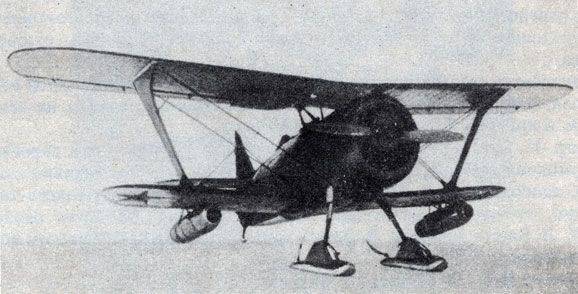
The thought came to mind - to be tested in a wind tunnel. But at that time they were wooden, as they did not expect to work in them with open fire. Merkulov decided to use an injector for engine testing. At one time he proposed a similar idea to Yu.A. Pobedonostsev. It consisted in using a liquid-propellant rocket engine to inject air into direct-flow engines. But Pobedonostsev cooled it, as there wasn’t yet any reliable rocket engine. And now, several years later, Merkulov again remembered the idea of injection. This time he suggested creating an air flow using compressed air from a cylinder. It was much easier and faster to make such an installation. The engine was small - one and a half meters long, with a diameter of two hundred forty millimeters.
The most difficult, it turned out, to achieve sustainable combustion and the most complete combustion of gasoline. Over this fought over a month. But the design of the cooling of the combustion chamber was successful immediately. Merkulov applied the cooling system using fuel entering the engine. Although there was a remote analogy with liquid rocket engines here, in aviation it was an innovation. And the proposed design performed quite ingeniously.
Tests DM-1 passed successfully. In September, that is, two months after the commemorative meeting in the People's Commissariat of the aviation industry, at which skeptics predicted the impossibility of creating a long-running ramjet, DM-1 worked for half an hour at a stand in Glider without burnout .
Soon DM-2 (diameter 400 mm, weight 12 kg) was created, intended for installation on the aircraft and conduct flight tests. But before that it was necessary to conduct comprehensive ground tests.
This time it was impossible to do without a wind tunnel. It was necessary to ensure the reliability and safety of the engine. And for this it was necessary to complete its airflow, checking work in the air stream. But the fact that researchers were allowed into some aerodynamic laboratory (there were only three in Moscow) had nothing to think about. At that time even large aviation design bureaus did not have their own wind tunnels.
We decided to build such a pipe in our factory. Manual supported engineers. Merkulov designed it with his friend Alexander Maslov. It was a steel, fairly impressive-sized pipe. The diameters of the input and output sections of the diffuser and the nozzle were three meters, the diameter of the working part - one meter, with a length of two and a half meters. The total length of the pipe was equal to the 12,5 meter.
A month after the end of the first engine tests, the more powerful DM-2 in the wind tunnel “held out” for two hours. His stable work allowed to conduct official tests. They took place on October 22. Only after such a thorough check Merkulov decides that it is possible to install the engines on the plane. Director Voronin singled out an I-15bis fighter for testing direct-flow engines to Merkulov.
In early December, began flight testing. On the eve of the first departure Voronin sent a deputy chief engineer Yu.N. Karpov to consult A.A. Mikulin - one of the leaders of the Soviet aircraft engine. Mikulin said: “Your plane will explode and burn. You will be happy if the pilot descends on an unburned parachute. ” After that, Voronin called the factory test pilot P.E. Loginov and acquainted him with the opinion of the famous engine builder. Loginov had the right to refuse, and no one would have condemned him for this. “I believe in these engines and am ready to fly,” he said.
The first flight was unsuccessful. Engines do not start. The air flow in flight was three times stronger than expected, and the flame was blown away. In addition, there was a fierce winter. Work out the ignition in a frosty stream of air - it was very difficult. Merkulov improves ignition. New tests, improvements.
Success came December 13 1939. Since that day, the engines worked steadily. And on January 25, 1940 passed official flight tests. A solid commission gathered: representatives of the People's Commissariat for the aviation industry headed by Deputy People's Commissar P.A. Voronin, all the plant management, together with the director P.V. Dementiev (future minister of the aviation industry of the USSR), representatives of the party committee, the factory committee.
Loginov fighter And-15bis made several laps over the airfield. Repeatedly started and switched off direct-flow engines, increasing and decreasing their thrust. Members of the commission, with a mixed sense of curiosity and apprehension, observed how, with an increase in thrust, jet fires escaped from jet engines. At maximum, they even exceeded the length of the fuselage. The plane, as if nothing had happened, made turns, and the pilot, apparently, calmly controlled it.
The act of the commission, drawn up to confirm this momentous event, stated: “The aircraft’s air-rocket engine was created by the works of the Aviakhim plant, which steadily operates on the aircraft and increases the flight speed. Safety of operation, fire resistance and durability of the engine have been tested by lengthy tests. ”
Only after two and a half years, the first foreign direct-flow engines were tested in Germany by Professor E. Zenger on a Dornier aircraft. So, thanks to the work of Merkulov, our country has gained priority in the development of direct-flow jet engines.
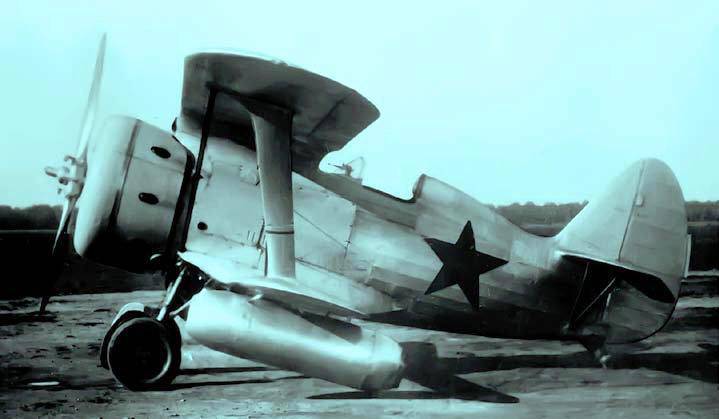
In the 1940 year, Merkulov creates a more powerful ramjet DM-4 with a diameter of five hundred millimeters. Fighter I-153 "Seagull" with these additional engines flew faster at an average of forty kilometers per hour.
Successful flight tests of air-jet engines attracted the attention of aviation developers. In three design teams of L.P. Kurbaly - A.A. Borovkova, I.F. Florov and A.Ya. Shcherbakov started the design of piston aircraft, which also provided for the installation of a ramjet engine. They were conceived not as suspended, but fit into the design, making an integral part of the wing or fuselage. For these aircraft Merkulov makes calculations ramjet engines.
At this time, Shcherbakov (head of the special constructions department of the Aviakhim plant), who successfully carried out work on high-altitude towing of gliders in the stratosphere using the so-called aeropod, and also created the country's first airtight cabins, suggested Merkulov to unite and seek to obtain the plant. Shcherbakov planned to engage in high-speed fighters with hermetic cabs, Merkulov - direct-flow engines for them.
In March, 1941, the country's leadership approved the decision to establish such a plant. Shcherbakov was appointed chief designer, Merkulov - his deputy. But the plant was not deployed - the war broke out. Merkulov gets the task to create direct-flow engines for the AS fighter. Yakovlev - Yak-7. He is appointed by the head of a small SKB.
Had to work in difficult conditions. Evacuation. Novosibirsk, then Tashkent. Disorder everywhere. Since the spring of 1942, when the Germans were driven back, he returned to Moscow. Production base was not. The industry switched to meeting the needs of the front. Tests and refinement of the new ramjet DM-4 with a diameter of five hundred millimeters progressed slowly.
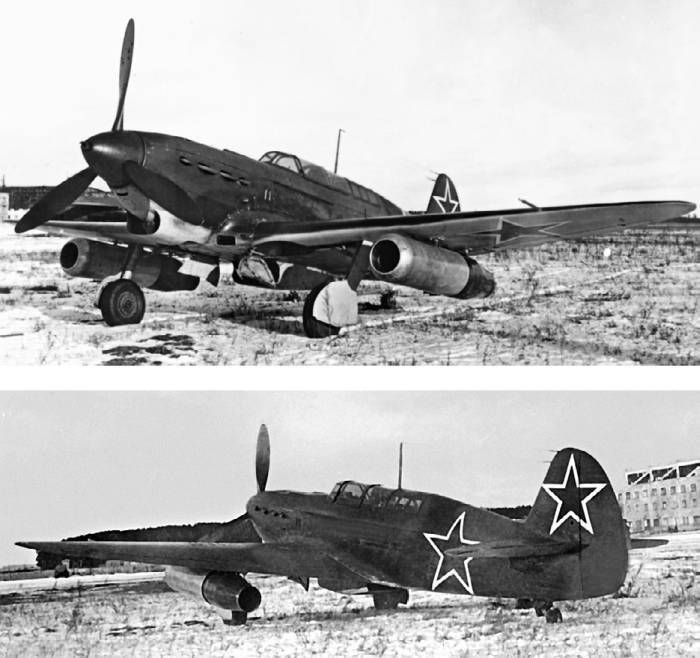
Finally, the Yak-7 was equipped with additional motors. Merkulov intended to conduct large-scale research. In one of the flights with ramjet engines, an increase in speed was obtained - more than fifty kilometers per hour. Manual flight test station for more accurate measurements decided ottarirovat speed indicator of the aircraft. But when flying on a dimensional basis (without direct-flow engines) a malfunction occurs in the fighter, and the test pilot S.N. Anokhin was forced to plant him "on the belly" on a plowed potato field. As a result, the car was broken, and the arduous work of the engine group was destroyed.
New fighter Merkulov not allocated. The tests, citing a small increase in speed, which was given by direct-flow engines, a reduction in speed with the ramjet engine turned off, as well as a high consumption of gasoline, the People's Commissariat of the Aviation Industry decided to stop.
At the end of 1945, another interesting suggestion appeared: I.A. Merkulova - the first afterburner. Lavochkin then created the first swept-wing aircraft in the country - La 160. But it turned out to be somewhat heavy for the YuMO-004 captured turbojet engine, and with the forced engine proposed by I.A. Merkulov, he successfully took off.
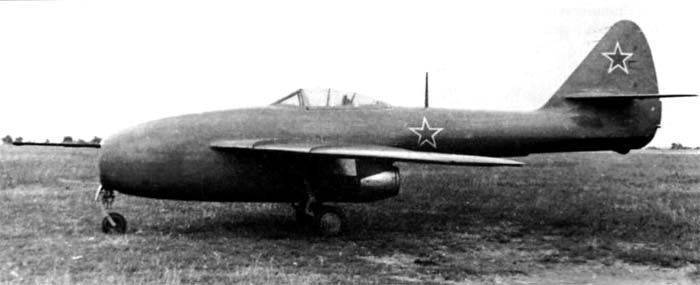
Merkulov had a tense life full of dramatic events, when not all his ideas were accepted and found support. So, in the mid-fifties, being the head of the department of ramjet CIAM, Merkulov theoretically develops a new type of power plant, working on a completely unusual thermodynamic cycle - with a variable mass of the working fluid and variable properties of the gas. But this idea has not yet found its embodiment.
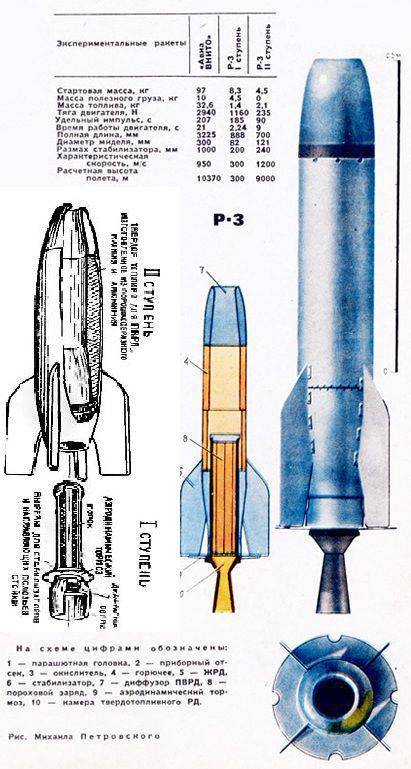
In the early sixties at the Institute of engines of the Academy of Sciences Merkulov finishes work on another interesting type of engine. It was a gas turbine jet engine. But, like last time, it was not possible to build it.
At the end of 1960, Merkulov received a copyright certificate for an ion engine. Then he participated in the preparation and testing of a similar engine on the Meteor-18 satellite.
From the mid-seventies, as soon as the VNIIPItransprogress institute was organized to develop non-traditional types of transport, Merkulov was the lead designer in it. He is involved in the creation of a number of projects on ultrahigh-speed land transport systems. Makes significant improvements to their turbojet engines.
Until the very last days of his life, I.A. Merkulov was full of creative ideas. New projects were constantly being born in his head, down to hypersonic airplanes. But not all the constructor's ideas were realized.
Sources:
Fighting D. Jubilee of the first flight of a ramjet engine in the USSR // Engine. 2009. No. 3 (63). C. 32-34.
Cold V. Designer first direct flow. // Model builder. 1990. No.12. C. 11-13.
Cold V. Pioneer of direct-flow engines. // Civil Aviation. 1993. No.3. C. 20-21.
Kozyrev M., Kozyrev V. Jet aircraft of the Second World War. M .: TSENTRPOLIGRAF. 2012. C. 55-58.
Serov G. At the beginning of the reactive era. // Planes of the world. 1997. No.3-4. C.2.
Information